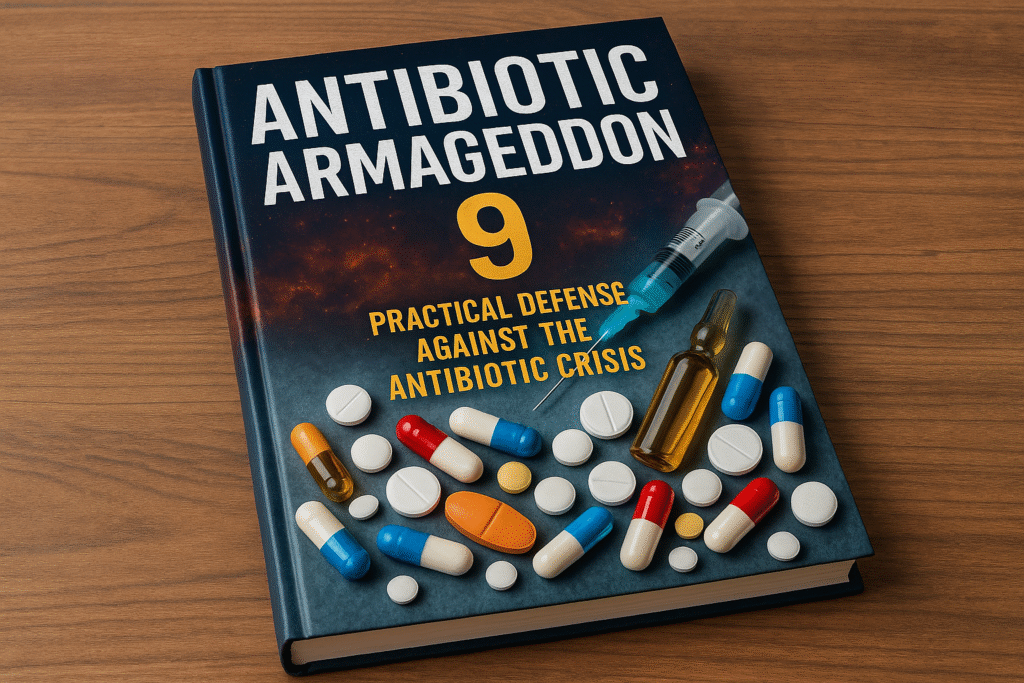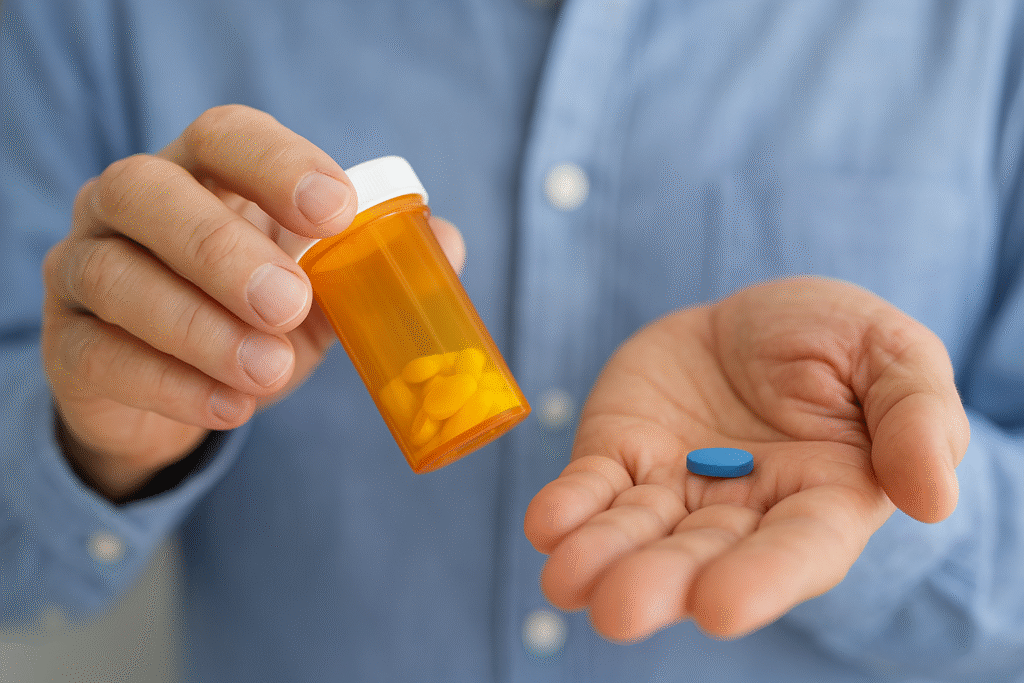Antibiotic resistance isn’t a future movie plot — it’s happening now. The world is seeing more infections that no longer respond to our best drugs, and that trend is accelerating. This practical, evidence-based guide explains what caused antibiotic resistance, why it’s a global problem, how long antibiotic resistance can last, and — most importantly — 9 simple, actionable steps you and your community can take to protect yourselves. The focus is global, with up-to-date figures for the United States, the United Kingdom, and international context.
Fast facts you need to know (the numbers that matter)
- Global toll: In 2019 bacterial antimicrobial resistance was directly responsible for an estimated 1.27 million deaths and contributed to nearly 4.95 million deaths overall. This burden makes AMR one of the leading infectious-disease threats worldwide. (World Health Organization)
- United States: Every year the U.S. experiences more than 2.8 million antimicrobial-resistant infections and over 35,000 deaths, according to CDC analyses. (CDC)
- United Kingdom: England recorded an estimated 66,730 serious antibiotic-resistant infections in 2023 — a rise above pre-pandemic levels. (GOV.UK)
- Future risk: Large analyses project that, without strong action, antimicrobial resistance could cause tens of millions of deaths cumulatively in coming decades and continue to worsen clinical outcomes. (The Lancet)
These are not abstract statistics — they translate into more surgical complications, longer hospital stays, fewer treatment options, and higher health costs for individuals and nations.
Why is antibiotic resistance a problem?
Antibiotics transformed medicine — enabling safe surgeries, cancer chemotherapy, and treatment of once-deadly infections. But resistance undermines those advances:
- When bacteria evolve resistance, antibiotics become less effective or useless.
- Resistant infections are harder and costlier to treat, often requiring longer hospital stays, more toxic drugs or combination therapies—and in some cases there are no effective drugs at all.
- AMR increases risks for routine medical procedures and threatens public-health security during outbreaks.
The combination of rising caseloads, slowing drug development, and global spread makes the antibiotic crisis a pressing, multi-sectoral challenge.
What caused antibiotic resistance? (short, evidence-based breakdown)
1. Overuse & misuse in humans
Taking antibiotics when they’re not needed (for viral colds or flu), poor adherence to prescriptions, and unnecessary broad-spectrum prescribing fuel selection for resistant strains. Health systems that lack rapid diagnostics tend to overprescribe “just in case.”
2. Use in animals and agriculture
Large volumes of medically important antibiotics are used in food-producing animals in many countries. This practice can select for resistant bacteria that spread to people through food, the environment, or direct contact. Regulatory action has reduced some use, but pressures remain. (U.S. Food and Drug Administration)
3. Poor infection prevention and control (IPC)
Inadequate sanitation, crowded healthcare settings, and weak infection control practices allow resistant organisms to spread rapidly between people.
4. Lack of new antibiotics
Scientific and economic barriers have slowed the development of novel antibiotics; the pipeline is weaker than the scale of need.
5. Global travel & inequity
Resistance arises locally but spreads globally via travel, trade and uneven access to diagnostics, vaccines and quality care.
(These drivers are repeatedly highlighted by WHO, CDC and national surveillance reports.) (World Health Organization, CDC)

How long does antibiotic resistance last?
There isn’t a single answer—resistance dynamics depend on the microbe, drug, and context:
- Some resistance genes decline when antibiotic pressure is removed, but others persist because they confer little fitness cost to bacteria or are linked to other advantageous genes.
- In hospital settings, resistant strains can become endemic and persist for years unless rigorous infection control and stewardship measures are implemented.
- At the population level, reversing large-scale resistance trends can take many years and coordinated policy action across human health, animal production, environment, and industry.
The takeaway: prevention and prudent antibiotic use today reduce long-term resistance tomorrow.
The 9 practical defenses everyone can use (simple hacks that work)
Below are concrete, user-friendly actions you can start today — grouped into what individuals can do at home and what communities/health systems should prioritize.
For Individuals & Families
1. Don’t demand antibiotics — use them only when prescribed
If your clinician says your infection is viral (e.g., most colds and flus), antibiotics won’t help. Ask about symptomatic relief and when to return if you worsen. Clear communication prevents unnecessary prescribing.
2. Take antibiotics exactly as directed — no sharing, no saving
If prescribed, follow dose and duration instructions. Don’t stop early unless advised by your clinician; incomplete or incorrect use can allow partially resistant bacteria to survive and proliferate.
3. Prioritize vaccination and preventive care
Vaccines reduce infections that might otherwise require antibiotics (e.g., pneumococcal vaccine, influenza vaccine, and for children, Haemophilus influenzae type b). Fewer infections → fewer antibiotic courses → less resistance.
4. Practice robust hygiene and food safety
Handwashing, safe food handling (cook to recommended temperatures), and keeping raw and cooked foods separate lower the chance of acquiring bacterial infections transmitted through food or contact.
5. Avoid unnecessary antibiotic use in pets and livestock
If you keep animals, follow vets’ advice and avoid over-the-counter antibiotic use for animals. Support policies that limit routine antibiotic use in food animals.
For Healthcare Settings & Communities
6. Demand and support antimicrobial stewardship in your clinic and hospital
Stewardship programs ensure the right drug, dose, route and duration are chosen. They save lives and slow resistance. Ask whether your local providers or hospitals have stewardship policies.
7. Use diagnostics — test before you treat when possible
Rapid tests (strep tests, urine dipsticks with clinical judgment, culture + sensitivity when indicated) can guide targeted therapy rather than broad-spectrum guessing.
8. Strengthen infection prevention and control (IPC)
Simple measures — hand hygiene, clean equipment, isolation when needed, adequate staffing and environmental cleaning — dramatically reduce spread of resistant organisms.
9. Advocate for policy changes and better surveillance
Public pressure helps governments fund surveillance (like ESPAUR in the UK, CDC tracking in the US), regulate antibiotic use in agriculture, incentivize antibiotic R&D, and support global initiatives. Encourage your representatives to back AMR action plans.
Quick myth-busting corner
- Myth: “If antibiotics worked before, I should save leftovers for next time.”
Fact: Never use leftover antibiotics or someone else’s prescription — mismatched drug/type and sub-therapeutic dosing drive resistance. - Myth: “Antibiotics speed recovery from any infection.”
Fact: For viral infections, antibiotics provide no benefit and can cause harm. - Myth: “New antibiotics will solve the problem.”
Fact: New drugs help, but without stewardship, resistance to new agents will also emerge. Conserving effectiveness is essential.

How researchers and policymakers are fighting back (short overview)
- Surveillance & data (WHO, CDC, UKHSA/ESPAUR) track resistance trends and hotspots. (World Health Organization, GOV.UK)
- Stewardship programs are expanding in hospitals and outpatient settings. (CDC)
- Regulation in agriculture has reduced some antibiotic use (e.g., declining sales in US food animals reported by FDA). (U.S. Food and Drug Administration)
- R&D incentives (public–private partnerships, push/pull financing) aim to refresh the antibiotic pipeline.
- Global action plans & pledges are trying to coordinate responses across countries, sectors and WHO member states.
Short interactive self-check (use this at the clinic or at home)
Answer YES/NO and follow the recommended step:
- Do you take antibiotics without seeing a clinician?
- If YES → Stop. Seek healthcare advice before taking antibiotics.
- Have you been prescribed antibiotics and stopped early because you felt better?
- If YES → Talk to your clinician about whether you need a recheck; don’t self-treat next time.
- Do you or your family work with farm animals or buy meat from producers?
- If YES → Ask about antibiotic use practices at the farm or choose producers using responsible antibiotic policies.
- Does your clinic/hospital display an antimicrobial stewardship policy or certificate?
- If NO → Ask providers about stewardship and how they decide to prescribe.
Keeping a simple “prescription diary” (track why, dose, duration, and finish date) helps you and your clinician spot patterns.
How long will my local resistance problem last — and what to expect?
Resistance likes niches where antibiotics are common and infection control is weak. Local improvement is possible within years if communities adopt stewardship, vaccination and IPC measures. Reversing national or global trends takes longer and sustained commitment — but targeted policies (reducing inappropriate use, investing in diagnostics and hygiene) have produced measurable improvement in some contexts.
Where to learn more — trusted government & global resources
For more detail, official guidance and surveillance data, visit:
- World Health Organization — Antimicrobial Resistance fact sheet
https://www.who.int/news-room/fact-sheets/detail/antimicrobial-resistance. (World Health Organization) - Centers for Disease Control and Prevention (CDC) — Antimicrobial Resistance
https://www.cdc.gov/antimicrobial-resistance/index.html. (CDC) - UK Health Security Agency — ESPAUR report & AMR surveillance
https://www.gov.uk/government/collections/antimicrobial-resistance-amr-programme. (GOV.UK, GOV.UK) - U.S. Food & Drug Administration (FDA) — Antimicrobial Resistance & animal use data
https://www.fda.gov/animal-veterinary/antimicrobial-resistance. (U.S. Food and Drug Administration) - The Lancet / Global AMR burden studies (overview & major analyses):
https://www.thelancet.com/ (search “global burden of bacterial antimicrobial resistance 2019”). (The Lancet)
Final checklist — your 7-point action plan (printable)
- Don’t expect or demand antibiotics for colds/flu.
- Take antibiotics only when prescribed; finish as instructed.
- Get vaccinated (flu, pneumococcus, others as recommended).
- Wash hands, handle food safely, and follow wound care guidance.
- Talk with your vet about responsible antibiotic use for animals.
- Ask your healthcare provider about stewardship and diagnostic testing.
- Support policies and programs that promote surveillance, stewardship and new drug development.
Disclaimer
This article is informational and not a substitute for professional medical advice. For personal medical questions, diagnosis, or treatment, consult a qualified healthcare professional. Data cited are from official public-health sources and peer-reviewed analyses (WHO, CDC, UKHSA, The Lancet) and were current at the time of writing — please check the linked government pages for updates and local guidance. All images used in this article are royalty‑free or licensed for commercial use and are provided here for illustrative purposes.
